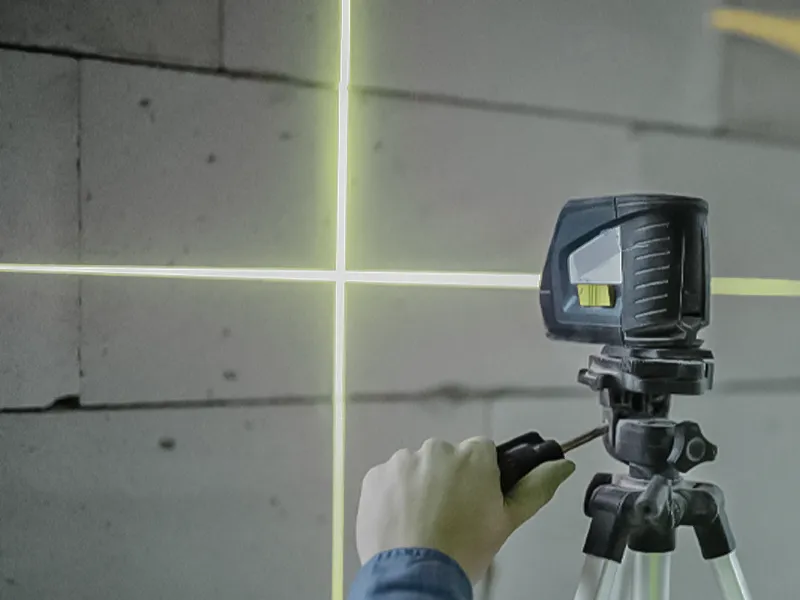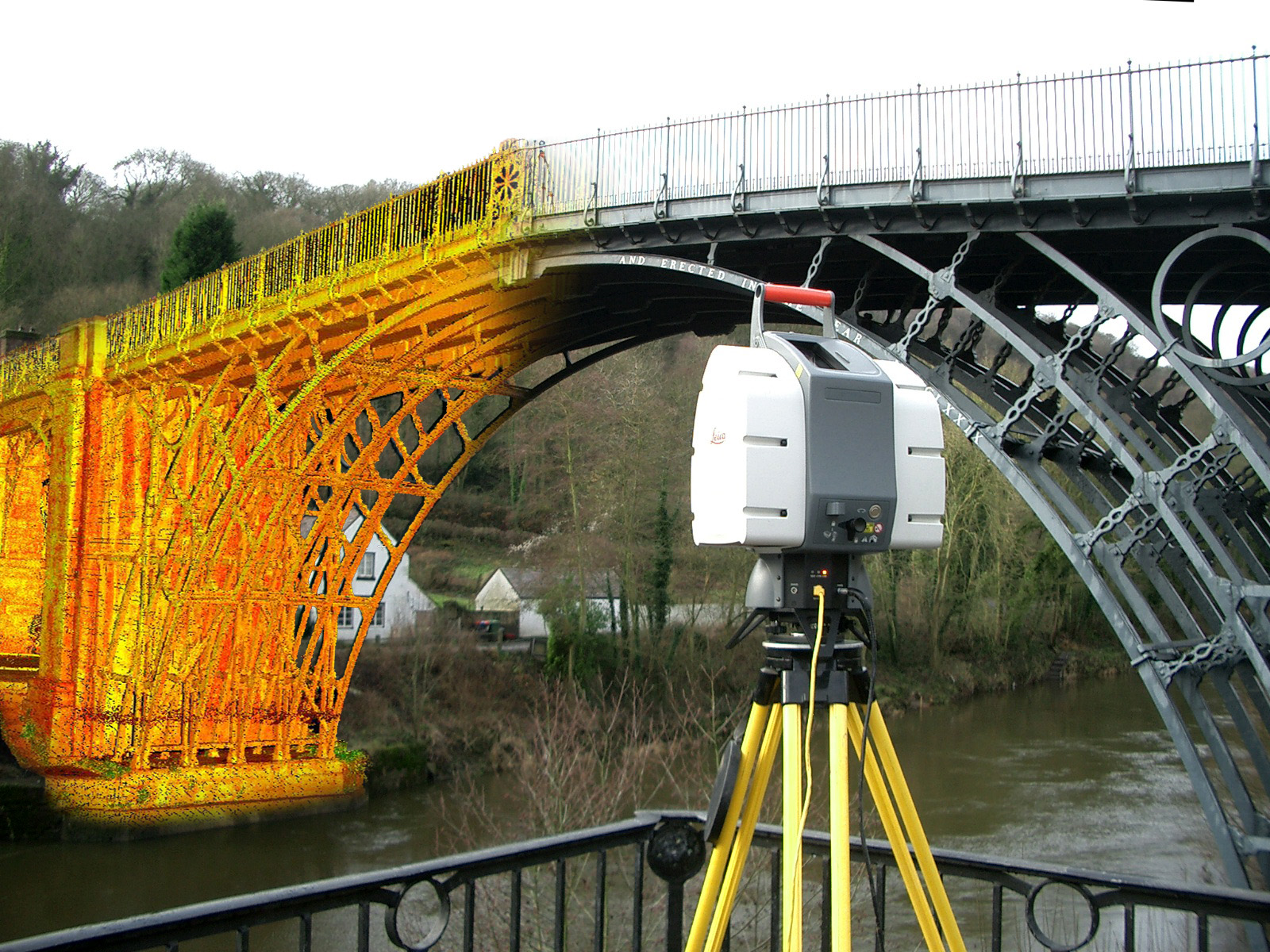Exploring the Applications of 3D Laser Scanning in Archaeology and Cultural Heritage Conservation
The integration of 3D laser scanning innovation in archaeology and cultural heritage conservation marks a considerable innovation in exactly how historic websites and artefacts are documented and assessed. This non-invasive approach supplies accurate spatial data, exposing complex information that were formerly challenging to record. As the applications of this modern technology remain to evolve, numerous implications for paperwork, education and learning, and preservation arise, welcoming more expedition into its transformative effect on the area.
Comprehending 3D Laser Scanning Modern Technology
3D laser scanning innovation has actually reinvented the area of archaeology by giving detailed and exact spatial data. This innovative modern technology utilizes laser light beams to record millions of data points from an object or website, creating an extremely precise three-dimensional depiction (3D Scanning). The resulting point clouds can disclose detailed details of historical sites, structures, and artifacts that may be undetectable to the nude eye
Utilizing this modern technology, archaeologists can document the precise dimensions, shapes, and positions of things with extraordinary precision. This technique minimizes the danger of human mistake and eliminates the demand for substantial hand-operated measurements. Moreover, the information collected can be assessed and shared easily, assisting in cooperation amongst researchers. By incorporating 3D laser scanning with GIS and other electronic tools, archaeologists boost their capability to picture and analyze historical contexts, bring about deeper understandings right into ancient societies and settings.
Enhancing Historical Documentation
3D laser scanning substantially boosts archaeological documentation with its capacity to develop accurate site maps. This modern technology assists in detailed artifact analysis, offering understandings that standard methods may forget. Furthermore, it ensures the preservation of contextual data, which is vital for recognizing the relationships within historical sites.
Exact Website Mapping
While conventional mapping techniques usually struggle with catching the complex information of historical sites, advanced laser scanning technology provides a revolutionary approach to precise site mapping. This technique makes it possible for archaeologists to create highly outlined and exact three-dimensional depictions of websites, showcasing topographical variations and structural functions with exceptional fidelity. The capability to catch countless data points in a matter of minutes allows for comprehensive paperwork, which can be easily updated and shared among scientists. In addition, laser scanning promotes the dimension of complicated geometries that would be challenging to evaluate using conventional tools. Consequently, this modern technology boosts the accuracy of site maps, adding substantially to the conservation and understanding of cultural heritage resources.
Thorough Artefact Analysis
Laser scanning technology greatly enhances the evaluation of historical artifacts, giving scientists with extraordinary detail and accuracy. This approach catches intricate surface structures, measurements, and features that typical documentation techniques may ignore. By generating high-resolution 3D designs, scholars can carefully check out artefacts without the risk of damages intrinsic in physical handling. This precision enables far better comparative researches, allowing specialists to determine production techniques, stylistic variants, and potential social significance. The ability to control and envision data in three measurements facilitates a deeper understanding of artefact functionality and usage. Generally, laser scanning cultivates an extra complete approach to archaeological paperwork, ensuring that vital info concerning artifacts is preserved for future research study and education and learning.
Conservation of Contextual Data
Preserving contextual data is vital for boosting historical documents, as it assures that findings are understood within their original environmental and cultural frameworks. 3D laser scanning technology significantly adds to this preservation effort by catching comprehensive spatial connections amongst artifacts, structures, and their atmospheres. By generating accurate 3D designs, archaeologists can document the precise places and orientations of items sitting, assisting in a comprehensive understanding of their context. This technology enables researchers to revisit and analyze websites long after excavation, keeping the stability of contextual information. On top of that, electronic documents produced through scanning can be shared globally, cultivating joint research study and public interaction. Ultimately, maintaining contextual information with 3D laser scanning enhances archaeological stories and promotes a more extensive recognition of cultural heritage.
Conservation of Cultural Heritage Sites
As innovations in innovation continue to advance, the preservation of social heritage sites has actually ended up being increasingly dependent on innovative approaches such as 3D laser scanning. This innovation permits the in-depth documentation of artifacts, structures, and landscapes, recording their accurate measurements and spatial relationships in a non-invasive way. By creating high-resolution 3D versions, researchers can check and evaluate damage patterns, enabling aggressive conservation techniques.
In addition, 3D laser scanning helps with the sharing of detailed site information with the global community, advertising cooperation among chroniclers, excavators, and conservationists. These designs function as important resources for education and public involvement, raising awareness of cultural heritage issues. Additionally, the electronic documents developed can safeguard versus loss as a result of ecological factors, criminal damage, or neglect. In general, 3D laser scanning represents a transformative technique to the preservation of social heritage, ensuring that these sites can be researched and valued by future generations.

Remediation and Reconstruction Initiatives
The in-depth documentation accomplished via 3D laser scanning plays a substantial function in reconstruction and reconstruction efforts within archaeology. This technology gives precise dimensions and high-resolution imagery, permitting for precise electronic models of frameworks and artifacts. These designs function as necessary references throughout repair processes, allowing excavators to make and visualize the initial style informed decisions concerning products and techniques required for fixing.
3D laser scanning assists in the restoration of harmed or shed aspects by producing thorough reproductions. This process help in ensuring that repairs preserve historic integrity while additionally enabling cutting-edge approaches to restore sites. The capability to assess wear patterns and architectural weak points through checked data improves understanding of a site's historical context and its usage gradually. As a result, 3D laser scanning not only maintains the physical facets of cultural heritage but additionally enhances the story of background, guiding future repair undertakings.
Educational and Research Study Opportunities
The integration of 3D laser scanning in archaeology opens considerable academic and research possibilities. Academic cooperations can boost the understanding of old sites, while specialized training workshops furnish professionals with vital abilities for utilizing this technology. With each other, these campaigns foster a richer interaction with archaeological techniques and approaches.
Academic Collaborations in Archaeology
Collaborative efforts in archaeology have come to be increasingly crucial for progressing both instructional and study chances. By promoting collaborations amongst universities, study institutions, and cultural heritage companies, these partnerships help with the exchange of expertise and resources, enhancing the quality of archaeological studies. Joint projects often leverage varied proficiency, permitting complete analyses and ingenious approaches, particularly in the application of innovations like 3D laser scanning. Such cooperations additionally promote interdisciplinary methods, involving fields such as preservation, geography, and history scientific research. On top of that, scholastic collaborations frequently lead to the development of new educational programs and training programs, preparing the future generation of excavators to successfully use innovative innovations in their work. Ultimately, these partnerships add to the conservation and understanding of social heritage.
Educating Workshops for Experts
Educating workshops for experts in archaeology are increasingly vital for enhancing abilities in the application of sophisticated modern technologies such as 3D laser scanning. These Look At This workshops provide participants with hands-on experience in utilizing innovative devices and software program, fostering a deeper understanding of information capture and analysis processes. Experts can discover to my website create exact digital versions of archaeological sites, which markedly help in documents and preservation initiatives. In addition, these training sessions commonly include discussions on finest techniques and study, promoting understanding exchange amongst individuals. By spending in continuous education, experts can remain upgraded on progressing innovations, eventually improving the effectiveness of their research and social heritage conservation efforts. This dedication to skill improvement is vital for progressing the field of archaeology.
Future Fads in 3D Laser Scanning for Archaeology
As advancements in technology remain to reshape various areas, the future of 3D laser scanning in archaeology promises to boost both the precision and performance of site documentation and analysis. Emerging trends show a growing assimilation of fabricated knowledge and artificial intelligence, promoting automated information handling and interpretation. This development will certainly permit excavators to analyze complex datasets faster, bring about faster understandings into historical contexts.
Additionally, the combination of drone innovation with 3D laser scanning is most likely to increase, making it possible for complete aerial surveys of historical sites that are challenging to gain access to. The raising price of scanning devices will democratize gain access to, empowering smaller sized organizations and independent researchers to use these tools successfully. Additionally, improvements in virtual truth and augmented fact will certainly enable immersive experiences for public engagement and education and learning, making historical findings more available and interactive. These fads collectively signal a transformative future for archaeology, improving preservation initiatives and expanding the technique's outreach.
Frequently Asked Questions
Just How Much Does 3D Laser Scanning Devices Expense?

What Are the Limitations of 3D Laser Scanning?
The limitations of 3D laser scanning consist of high costs, potential information processing challenges, sensitivity to ecological problems, and trouble capturing elaborate information in look at this web-site complex surface areas, which can impact the accuracy and completeness of checked depictions. (3D Scanning)

Can 3D Laser Scanning Be Used Undersea?
Yes, 3D laser scanning can be made use of undersea, yet it calls for specific tools and strategies to get over obstacles such as water distortion and restricted visibility. Successful applications have been demonstrated in marine archaeology and underwater surveys.
How Lengthy Does a Scanning Task Usually Take?
A scanning job generally takes anywhere from a couple of days to several weeks, depending upon the intricacy and size of the area being checked, along with the prep work and post-processing requirements associated with the task.
Are There Specific Software Program Needs for Handling 3D Scans?
Yes, certain software demands for processing 3D scans consist of programs efficient in handling huge factor clouds, such as Autodesk Wrap-up, Cyclone, or MeshLab. These tools promote analysis, visualization, and combination right into different applications successfully.
The combination of 3D laser scanning technology in archaeology and cultural heritage preservation notes a considerable innovation in how historic sites and artefacts are recorded and analyzed. 3D laser scanning technology has actually revolutionized the field of archaeology by providing specific and thorough spatial information. As innovations in technology proceed to progress, the conservation of cultural heritage sites has actually ended up being significantly reliant on cutting-edge techniques such as 3D laser scanning. As advancements in innovation proceed to improve different areas, the future of 3D laser scanning in archaeology guarantees to boost both the precision and performance of website documents and evaluation. The combination of drone modern technology with 3D laser scanning is likely to increase, enabling comprehensive airborne surveys of archaeological sites that are challenging to gain access to.